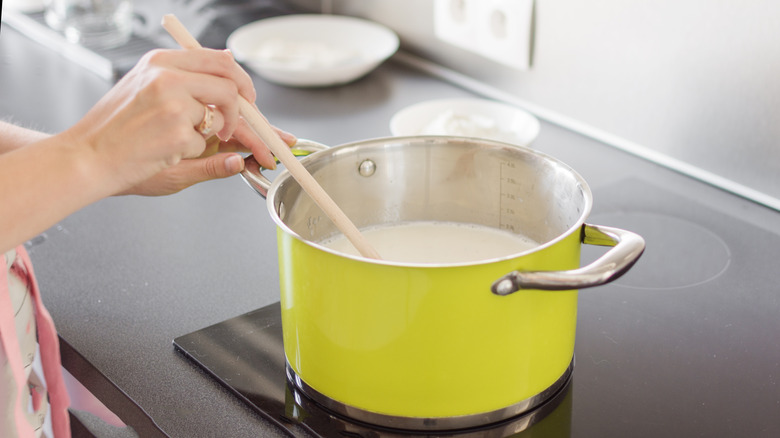How Jacques Pépin Thickens Cognac Sauce Without A Roux
Jacques Pépin doesn't have the world's best restaurant or a slew of Michelin stars, yet he is one of the most respected chefs in the world. Without a second thought, he is mentioned in the same breath as his French contemporaries Paul Bocuse and Joël Robuchon, both of whom helped define twentieth-century haute cuisine. So then why is Pépin so revered? Because he is a master of culinary technique and aptitude, as evidenced in the elegant Cognac sauce he serves on beautifully roasted chicken.
The sauce is a simple reduction of chicken broth, onion, black peppercorns, and white wine finished with cream and Cognac, as detailed in Bon Appétit. But what makes it stand out is what Pépin uses to thicken the sauce. Whereas many classic French sauces are made stouter with the addition of roux, a cooked combination of flour and butter in equal portions, here the chef uses beurre manié to accomplish the same task. Beurre manié, or "kneaded butter," is also a combination of butter and flour, but it is uncooked, and as the name suggests the flour is vigorously worked into room-temperature butter.
While seemingly similar, roux and beurre manié result in slightly different outcomes, and one can assume that Pépin uses kneaded butter for a good reason.
What's the difference between roux and beurre manié?
Roux is a mixture of equal parts flour and fat, traditionally butter, cooked together to create a thickening agent. The fat and flour are cooked over heat until the mixture reaches the desired color, which can range from white to blonde to brown, depending on the recipe. The cooking process removes the raw taste of the flour and gives roux a nutty flavor. Roux is typically used at the beginning of a recipe, where the flour is cooked in the fat before liquid is added, allowing the flavors to meld together.
On the other hand, beurre manié is not cooked before being added to a dish. It is used as a last-minute thickening agent or to adjust the consistency of a sauce just before serving. Beurre manié is kneaded together until it forms a smooth paste and is then whisked into the hot liquid, allowing it to dissolve and thicken a sauce or soup. It is particularly useful when you want to thicken a sauce quickly without altering its flavor.
Ultimately, the choice between beurre manié and roux depends on the desired outcome and the nature of the dish being prepared. Pépin's Cognac sauce is rich in flavor on its own — as is his roasted chicken — thus there is no need for the heavy, nutty addition of roux. Rather, he keeps it simple and lets the incumbent flavors shine with the addition of a little beurre manié.

